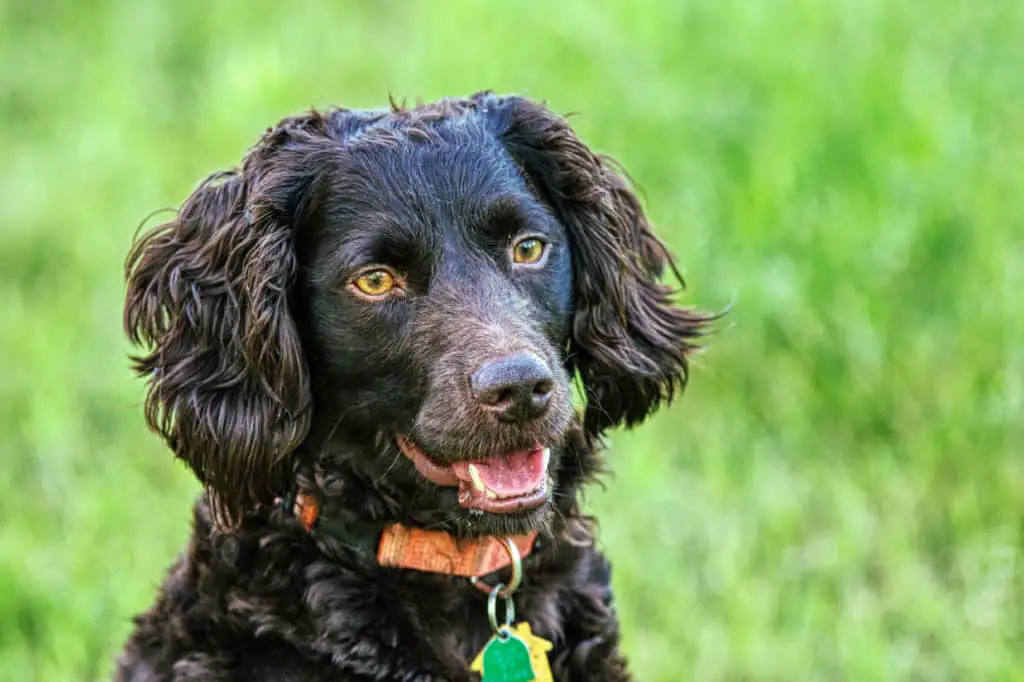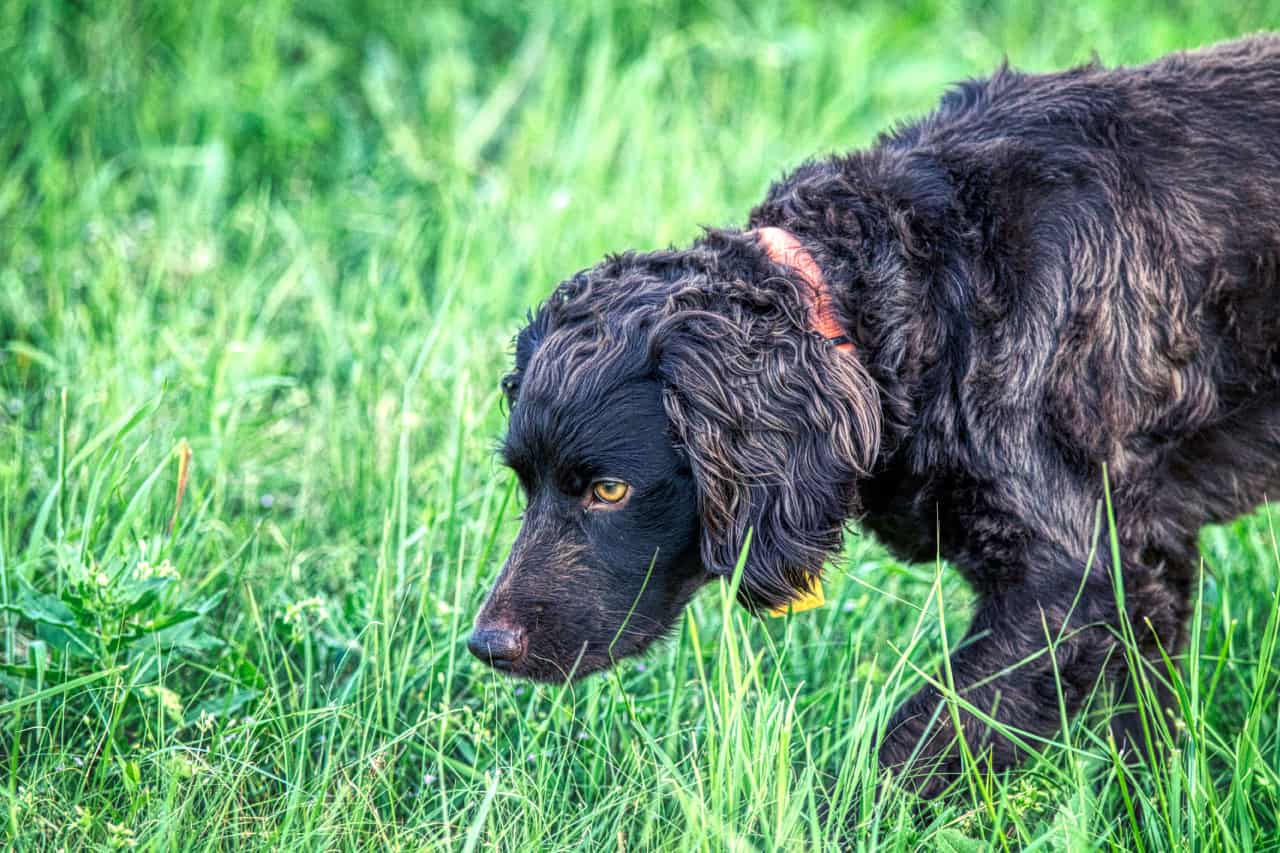There are so many dog breeds recognized by the American Kennel Club and other National Canine registries that it is easy to become confused about the categorization of different dog breeds. The categories are based on the breed’s inherent characteristics and the intended purpose for which the breed was initially developed.
Boykin spaniels are not Pointers. Boykin spaniels are flushers that force birds to take flight. Pointers alert the hunters to a bird’s presence through a static alert; they do not chase prey. A hesitant flush may make a Boykin Spaniel appear to mimic the point alert of a pointer.
Few dog breeds are still used for their original purpose. Most dogs now fulfill the role of a beloved pet, family member, and canine companion. Although most dogs are no longer used to perform a specific function; it does not diminish the characteristics that made them good at their original jobs. Owners who understand what breed category their dog belongs to will better understand their dogs, even if their dog is a pet. Which group does a Boykin Spaniel belong to? And why is it essential to determine if a Boykin spaniel is a retriever, flusher, pointer, or setter?
What Are Gundogs?
Most canine associations have divided the registered dog breeds into specific groupings based on the breeds’ different purposes and general characteristics. The American Kennel Association has divided the 190 recognized dog breeds into eight distinct groups or categories.
The eight categories are:
- Herding Group
- Sporting Group
- Toy Group
- Working Group
- Hound Group
- Non-Working Group
- Terrier Group
- Miscellaneous Group
The sporting group is sometimes called the gundog group due to the number of gundogs found within this group. Thirty-one dog breeds are placed within this group include all the Pointer breeds and the Boykin Spaniel.
Characteristics Of Gundogs
Gundogs are often household favorites. The same characteristics bred into them also make them exceptional pets and even therapy dogs.
They are calm and even-tempered. You cannot have a nervous, easily startled, or noise-sensitive dog when most hunters’ favored weapons are rifles. Gundogs are bred to have a robust human attachment. The hunters are focused on the prey. Dogs need to stay with their owners even when the owner is not focused on their dog.
The hunters need a dog who is obedient and easily trained. A dog who loses focus and can’t follow precise instructions is of no use to a hunter and a liability. The risk of a gun-related accident occurring with a poorly trained dog are high; the dog, the owner, or others may be injured in the accident.
Gundogs are notoriously “soft” dogs. They are gentle and need to have a soft bite. A well-bred well-trained dog should not leave any marks on the bird or artificial retrieve article when hunting with its owners.
The Four Sub-Categories of Sporting Dogs
The dogs assist the hunters in their pursuit of game, typically birds or small prey animals, e.g., rabbits. There are four different categories based on the dog’s function on the hunt. These four categories are Setters, Pointer, Flushers, and Retrievers. Hunting terrain may be field, forest, rough-terrain, or water.
What Are Setters?
The setters alert to the presence of birds by adopting a low-lying crouch or set. The crouch allows the hunters to throw nets over the birds without obstruction from the dog’s body before guns were popularized for hunting.
There are four setter breeds, the Irish, the English, the Gordon, and the Irish Red and White Setter.
What Are Pointers?
Both pointers and setters will methodically canvas a field for game scents. Once they find the trail, they will go motionless, unlike most other breeds that instinctively chase potential prey.
The setters and pointers’ function is very similar, but the alert is different between the two breeds. A setter will adopt a crouched set or position; the pointer will raise one foreleg and shift the body weight forwards.
A pointer appears to form a straight line or arrow with their body directed towards the birds demonstrating the point position. The dogs should hold the body with a positive tension and the tail positioned on the horizontal line.
Unlike flushers or setters, pointers usually are large breed dogs with short hair and a muscular body.
The most common Pointer Breeds are:
- English Pointer
- German Short-Haired Pointer
- German Wire-Haired Pointer
- American Brittany
- Vizsla
- Weimaraner
There are many other Pointer breeds, but the above-listed Pointers are the most commonly found in the United States.
What Are Flushers?
Flushers are smaller dogs who are bred to work in close quarters with the gunmen. The small flushers excel when working through dense underbrush or forested areas. These dogs race in and “flush” out birds forcing them to take flight so the hunter can shoot. The flushing dog breeds move quickly, leaving no branch unchecked or stone unturned.
An improperly trained dog or novice handler may find the experience of hunting with a flusher chaotic. The hunts with a flushing breed in tow have a much faster pace than the stately and controlled field trials performed using pointers or setters.
Most spaniel breeds are flushers, including the Boykin spaniel. As a secondary function, most spaniels can be taught to retrieve the downed birds. However, their retrieve will not be as strong or as intuitive as the dogs bred to primarily be retrievers.
What Are Retrievers?
Retrievers can perform land or water retrieves. After the hunter has shot the prey, retrievers are sent to fetch the game and return it to the hunter. A good retriever will not leave any marks on the retrieved bird, evidence of a retriever’s soft mouth. A soft mouth does not refer to the strength of the dog’s bite but rather the gentleness with which the dog holds items in its mouth.
Many retriever breeds such as the golden retriever and Labrador retriever routinely make the top ten most popular dogs in the USA. Like flushers, retrievers may be taught to perform a secondary function of flushing.

History of Boykin Spaniels?
Boykin Spaniels are a proudly American developed breed. The originator was L. Whitaker Boykin, a South Carolina hunter. He crossed a small white spaniel with American Water Spaniels, Pointers, Retrievers, and Springer Spaniels to achieve the Boykin Spaniel in the early 20th century.
A few generations later, the breed was officially recognized as the Boykin Spaniel. This medium-sized chocolate brown happy-go-lucky dog is the top choice of flusher for many American hunters. The Boykin Spaniel is a charming pet and a top-notch birder. Although primarily a flusher, the Boykin Spaniel can be taught to retrieve downed birds with great success.
Why People May Confuse Boykin Spaniels With Pointers?
The Boykin Spaniel is not a Pointer and has never been used in the same capacity as pointers and setters. They have always acted as flushers and retrievers.
A Boykin Spaniel may be confused with a Pointer if they perform a hesitant flush. This hesitant flush, sometimes known as an Old English Flush, is when the dog, in its uncertainty, pauses mid-stride before leaping into the bush where the bird is. They may also attempt to bat at the bird. In particular, clumber spaniels are known for the Old English Flush, but the Boykin can demonstrate it on occasion. A hesitant flush momentarily resembles the point hold of a traditional pointer breed.
Most spaniels are exclusively flushers; the one exception is the American Brittany Spaniel. The American Kennel Association first acknowledged the breed in 1934. Although the Brittany Spaniel was first bred as a flusher, the word spaniel was quickly dropped from the name. Hunters and breeders realized the small dog could equal and even out-perform many of the pointers. American Brittanies hold more dual titles in show and field trials than any other sporting breed or bird-dog.
Boykin Spaniel Vs Pointers
| Characteristics | Boykin Spaniel | English Pointer |
| Owner Experience | Suitable for novice to experienced owners | Ideal for seasoned dog owners |
| Children | Good | Good |
| Grooming | High | Low |
| Barking | Noisy | Noisy |
| AKC Category | Sporting/Gundog | Sporting/Gundog |
| Hunting Function | Flusher and Retriever | Pointer |
| Lifespan | 12-15 years | 12-15 years |
| Height | 14-18.” | 23-28.” |
| Weight | 25 – 40 lbs | 45 – 75 lbs |
| Intelligence | High | High |
| Origin Country | United States | England |
| Origin Year | 1900 AD | 1650 AD |
| Living Environment | All types, as long as their energy needs are met. | Best suited to a house with a large yard |
| Temperature Tolerance | 55 – 85 F | 45 – 80 F |
| Exercise Needs | Medium-High | High |
Conclusion
Although both Pointers and Boykin Spaniels are gundogs belonging to the sporting group, Boykin Spaniels were initially bred to be flushers and retrievers. Unlike the American Brittany, Boykin Spaniels have never diversified their hunting skillset and branched out into pointer territory. An Old English Flush, also known as a Hesitant Flush, may cause the Boykin spaniel to momentarily appear to be holding Point like a Pointer. A hesitant flush is an incorrect flush and not to be encouraged.

